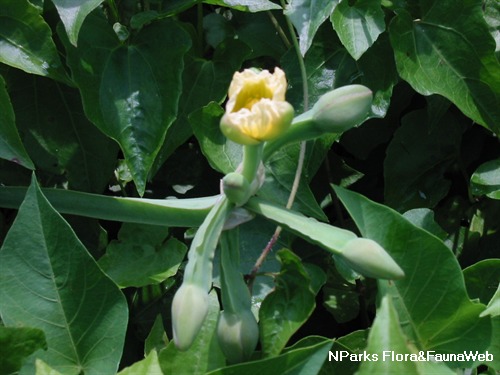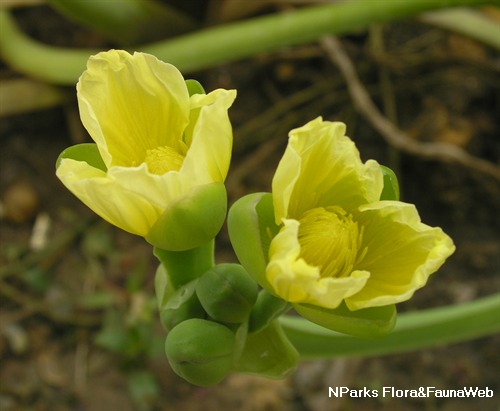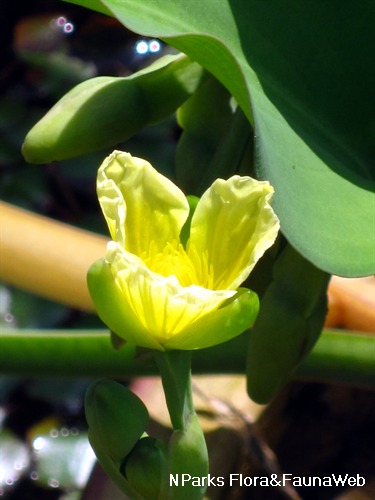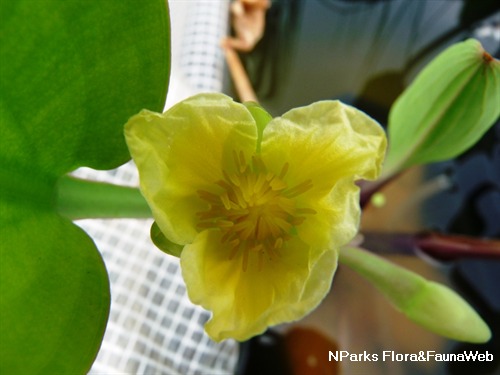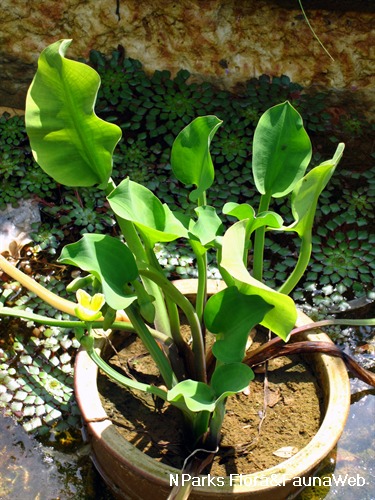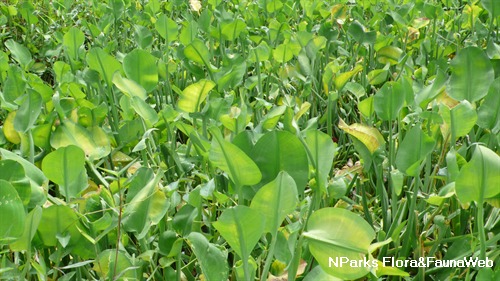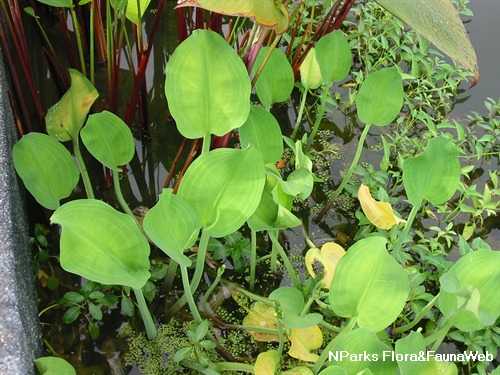
Back
Limnocharis flava (L.) Buchenau
| Family Name: | Limnocharitaceae |
| Synonyms: | Limnocharis emarginata |
| Common Name: | Sawah Lettuce, Velvetleaf, Yellow Burrhead, Hermit’s WaterLily, 黄花蔺 |
Name
Classifications and Characteristics
| Plant Division | Angiosperms (Flowering Seed Plants) (Dicotyledon) |
|---|---|
| Plant Growth Form | Aquatic (Emergent Aquatic, Waterside / Marginal), Herbaceous Plant |
| Mode of Nutrition | Autotrophic |
Biogeography
| Native Distribution | Tropical and subtropical America |
|---|
Description and Ethnobotany
| Others - Plant Morphology | Limnocharis flava was introduced to Southeast Asia more than a century ago and has become naturalised in Indonesia, Malaysia, Thailand, Burma and Sri Lanka. It has also become a vegetable commonly available in the markets and supermarkets in Java.Growth Form: An erect, perennial herbaceous plant that grows in both aquatic and swampy terrestrial environments, that is laticiferous (= containing latex). Reproductive growth is achieved through tillering, which is a type of vegetative reproduction accomplished through the production of subterranean shoots that are more or less erect (= tillers).Habitat: L. flava is found naturally in marshy shallow locations, such as rice fields, fish ponds and drains, up to 1300 m altitude.Foliage: Leaves are yellow-green, smooth and hairless and set in a basal rosette. Petioles are 5-75 cm long, thick and triangular in cross-section with many air chambers. Leaf blades are orbicular (= approximately circular in outline), broadly elliptic or ovate in shape, with 9-13 main nerves and numerous secondary nerves running in parallel.Flowers: Yellow flowers are borne on inflorescences, known as umbels (= flower stalks arise from a common point on the inflorescence stalk), 3-15 flowers on each. The inflorescence stalk (= peduncle) grows up to 90 cm in length, standing erect when flowering and curving downwards when fruiting. The flowers open in the morning only for a few hours.Fruits: Fruit compound, globose or broadly ellipsoid in shape and contains numerous seeds that are horseshoe-shaped and dark brown in colour.Cultivation: |
|---|---|
| Ethnobotanical Uses | Edible Plant Parts : Edible Leaves, Edible Flowers Food (Fruit or Vegetable) Others: Food: In Indonesia, Malaysia and Thailand, the young leaves of L. flava, with petioles attached, are eaten as a vegetable, usually heated over fire or cooked a short time before consumption. The young unopened inflorescences are eaten, likewise. The young leaves are preferred to the older leaves as the latter has a bitter taste. Other Uses: Whole plants are used as pig or fish fodder and also ploughed into rice fields as green manure. The plant is also often used as an ornamental plant in ponds. |
Landscaping Features
| Desirable Plant Features | Ornamental Flowers |
|---|---|
| Landscape Uses | Riverine, Aquarium / Aquascape |
| Thematic Landscaping | Water Garden |
Fauna, Pollination and Dispersal
| Seed or Spore Dispersal | Abiotic (Water) |
|---|
Plant Care and Propagation
| Light Preference | Semi-Shade, Full Sun |
|---|---|
| Water Preference | Lots of Water |
| Plant Growth Rate | Fast |
| Rootzone Tolerance | Waterlogged Soils (Drains Site), Fertile Loamy Soils |
| Propagation Method | Seed |
| Planting Distance | 30 m |
Foliar
| Mature Foliage Colour(s) | Green, Yellow / Golden |
|---|---|
| Mature Foliage Texture(s) | Smooth |
| Foliar Arrangement Along Stem | Rosulate / Rosette, Basal |
| Foliar Shape(s) | Non-Palm Foliage (Ovate, Elliptical, Orbicular / Round) |
| Foliar Margin | Entire |
Non - Foliar and Storage
| Stem Type & Modification | Herbaceous |
|---|
Floral (Angiosperm)
| Flower Colour(s) | Yellow / Golden |
|---|---|
| Inflorescence Type | Umbel |
| Flowering Period | Free-Flowering |
| Flowering Opening Time | Daytime |
| Flower Lifespan on Plant | [Remarks] (Flowers close after a few hours upon opening in the morning.) |
| Flower Lifespan on Plant - Remarks | Flowers close after a few hours upon opening in the morning. |
| Flowering Habit | Polycarpic |
Fruit, Seed and Spore
| Mature Fruit Colour(s) | Green, Yellow / Golden |
|---|
Image Repository
Others
| Master ID | 902 |
|---|---|
| Species ID | 2196 |
| Flora Disclaimer | The information in this website has been compiled from reliable sources, such as reference works on medicinal plants. It is not a substitute for medical advice or treatment and NParks does not purport to provide any medical advice. Readers should always consult his/her physician before using or consuming a plant for medicinal purposes. |

